Where Technology and Architecture Converge: Urban Design Challenges for the 2020s
Emerging technologies are reshaping the cities around us, with considerable change to come in the next decade. Ellen Daniel explores how some of the most notable urban technologies could shape future architecture
Images courtesy of Perkins+Will
The world of mobility and smart technology is rapidly changing, and with it, bringing new challenges for the urban environment. From urban air mobility above our heads, to smart city infrastructure connecting cities like never before, architectural design must now fit into an ever-changing technological landscape.
In 2020 and beyond, what new design challenges are presented by emerging technologies and how are innovative architectural firms rising to them?
COBE’s tree-like electric car charging stations are set to be rolled out across Denmark, Sweden and Norway.
Image courtesy of COBE
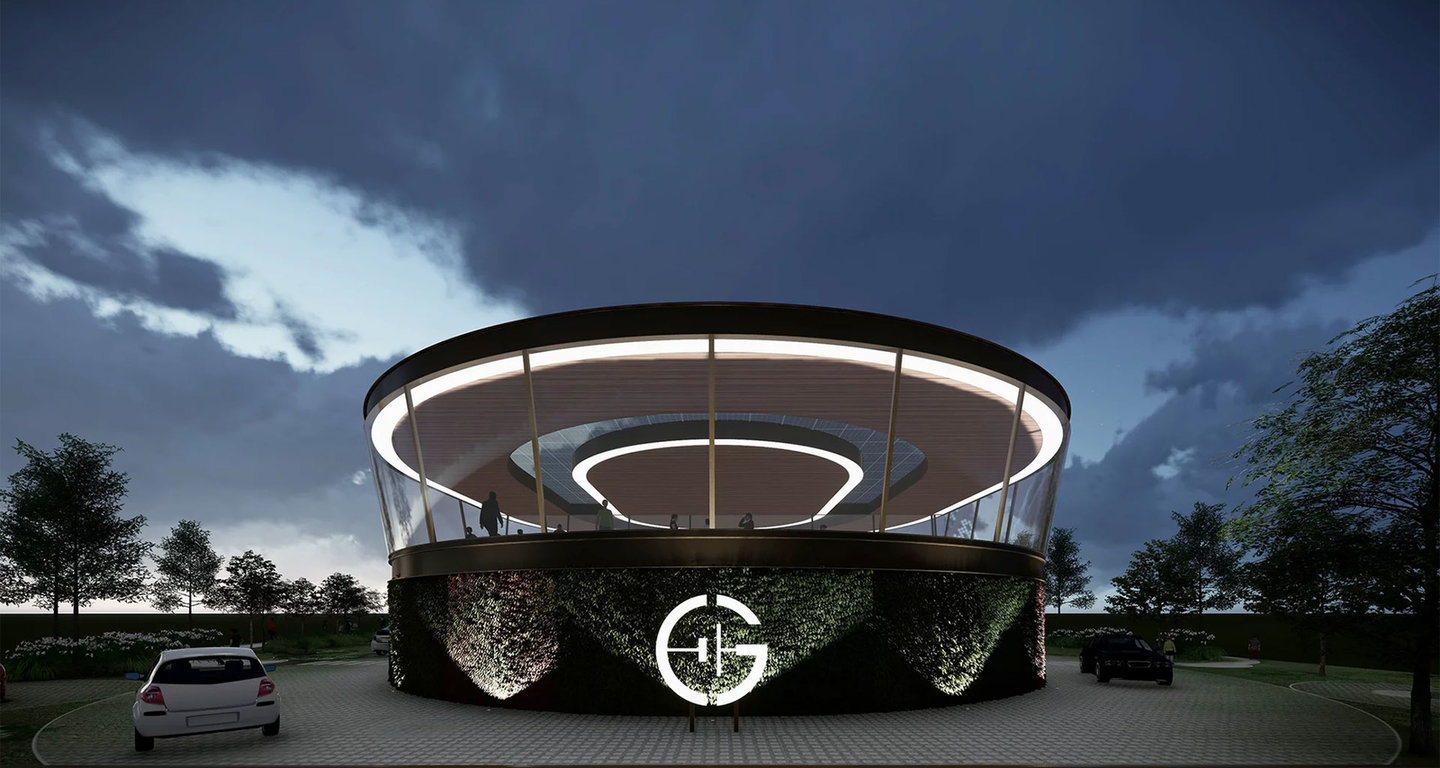
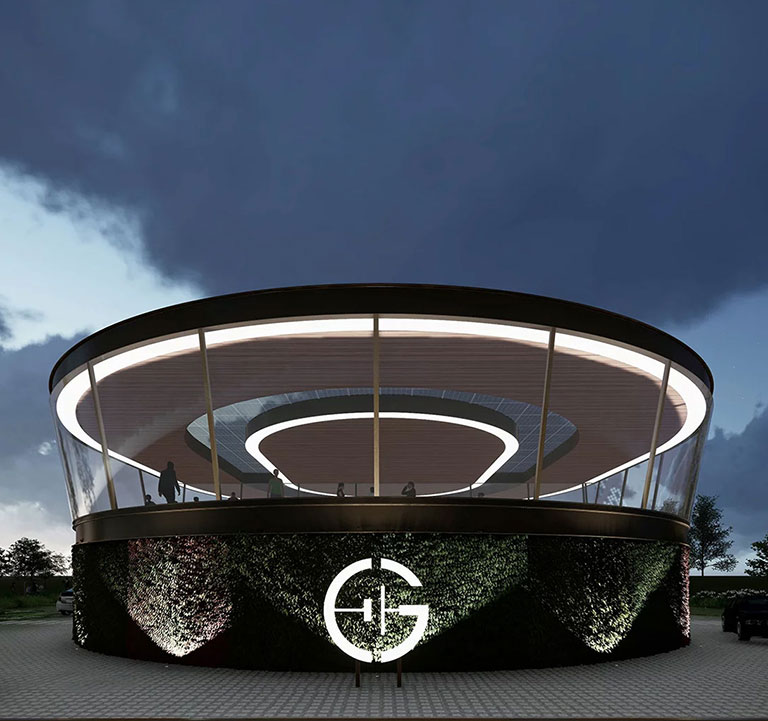
GRIDSERVE’s proposed electric forecourts combine functionality with leisure. Image courtesy of Arup
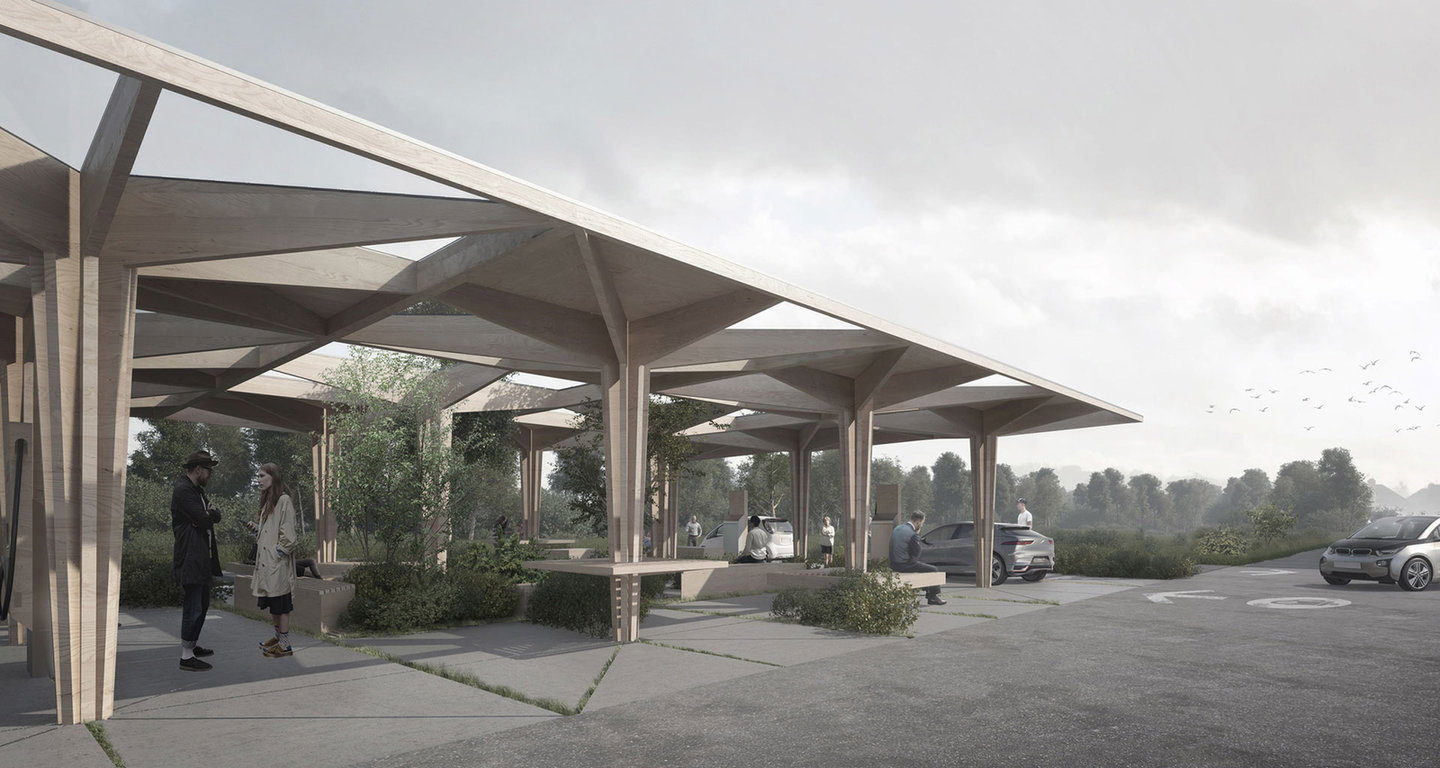

COBE’s tree-like electric car charging stations are set to be rolled out across Denmark, Sweden and Norway. Image courtesy of COBE
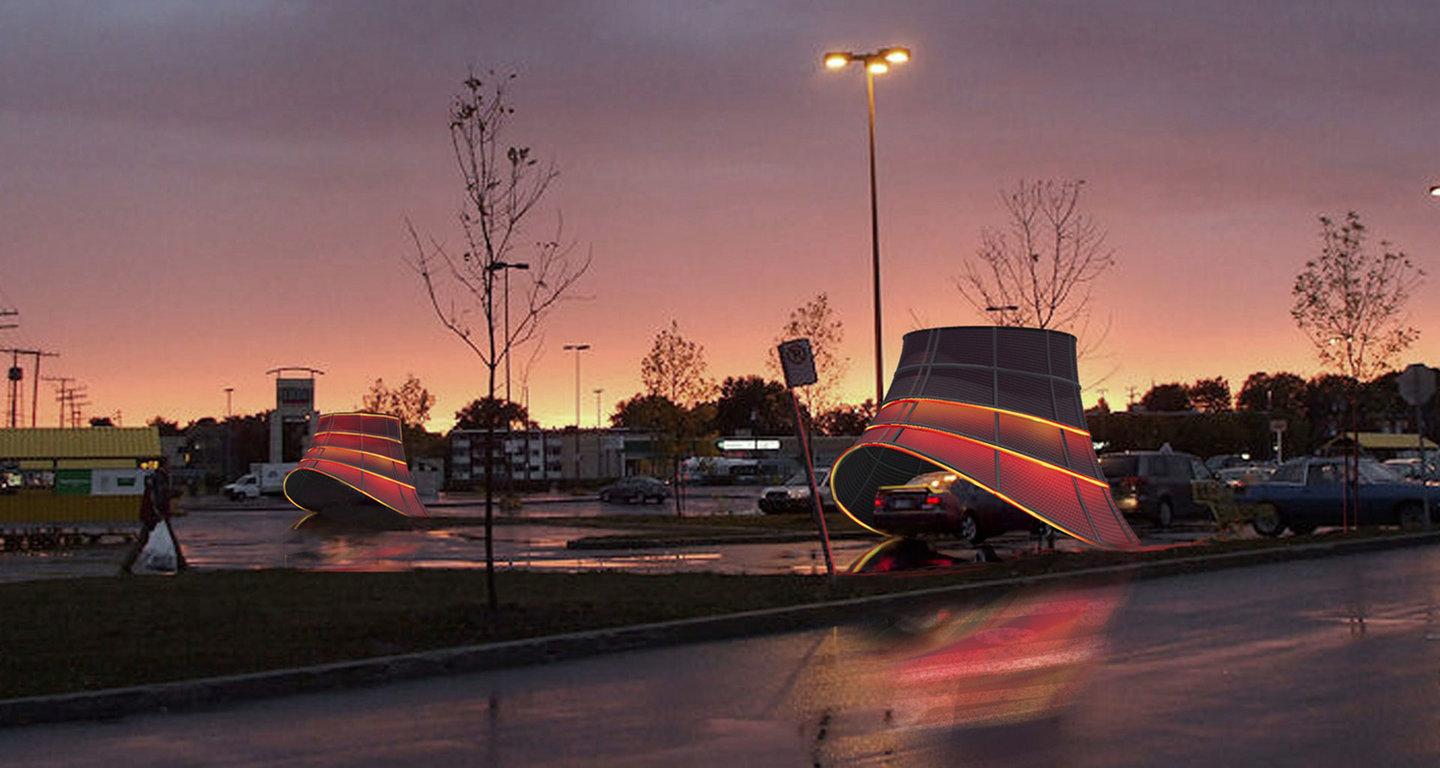
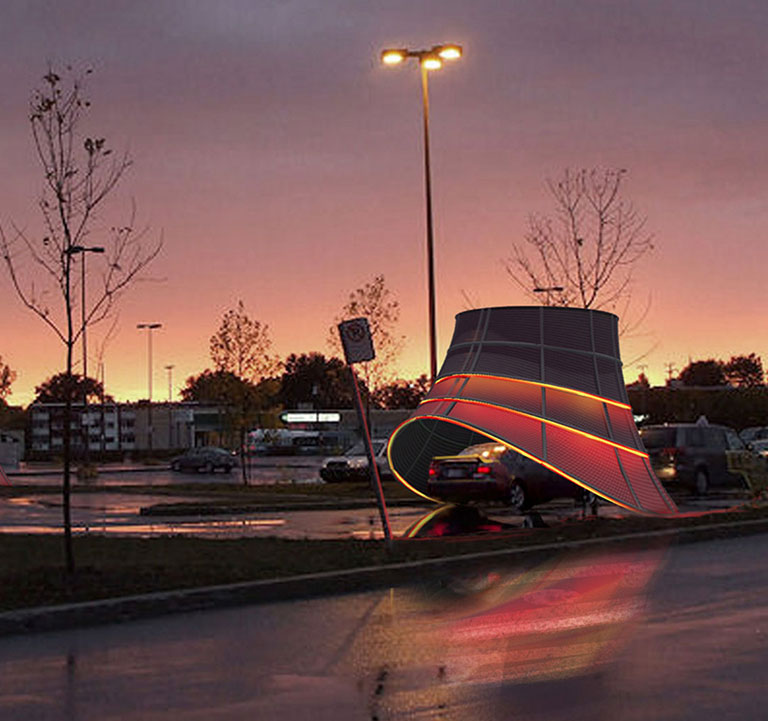
Arcollab’s Plug + Play design proposal was the winner of DesignByMany’s electric vehicle charging station competition. Image courtesy of HMMY
Electric cars
Along with the environmental benefits offered by electric cars, they bring with them the need for an entirely new infrastructure in the form of a network of charging stations.
Although electric car charging points are now a common sight on many roads, larger-scale charging stations, with the capacity for multiple vehicles to be charged simultaneously, are still a relatively new feature that creates an opportunity to rethink the design of the conventional petrol station. As electric cars grow in popularity, there has been a surge in concepts laying out what that could look like.
Earlier this year, GRIDSERVE announced plans to construct over 100 ‘Electric Forecourts’ across the UK, investing £1bn in the project. As well as ultra-fast charging bays, the plans promise “a coffee shop, fresh food, convenience supermarket, and airport-style lounge with high-speed internet”, marrying functionality with leisure.
“Future buildings will not only be the power sources for electric and smart transport, but will also form an essential part of their storage solution. ”
Last year Danish architecture firm COBE unveiled designs for electric car charging stations designed to look like trees, with the “branches” made entirely from certified wood designed to create “a meaningful break for the driver and passenger”.
With the stations, which are now being rolled out across Denmark, Sweden and Norway, surrounded by plants to encourage biodiversity and topped with solar panels, environmental impact will undoubtedly be a key pillar of charging station design moving forward.
The environmentally conscious core of charging station design is also reflected in the concepts of the winner of DesignByMany’s electric vehicle charging station competition. Arcollab’s Plug + Play design proposal features chargers fitted with LED lights that slowly dim as the vehicle is charged, designed to generate a “renewed consciousness of energy use in our modern lives”.
Professor Dave Worsley, Director of the Active Building Centre said:
“Future buildings will not only be the power sources for electric and smart transport, but will also form an essential part of their storage solution. This will change how we see the separation of transport and architecture and will see us moving to a world where the transport and building systems are integrated and supported by significant renewable energy resources are built in.”
Corgan’s CONNECT | EVOLVED Uber Air Skyport design.
Image courtesy of Corgan
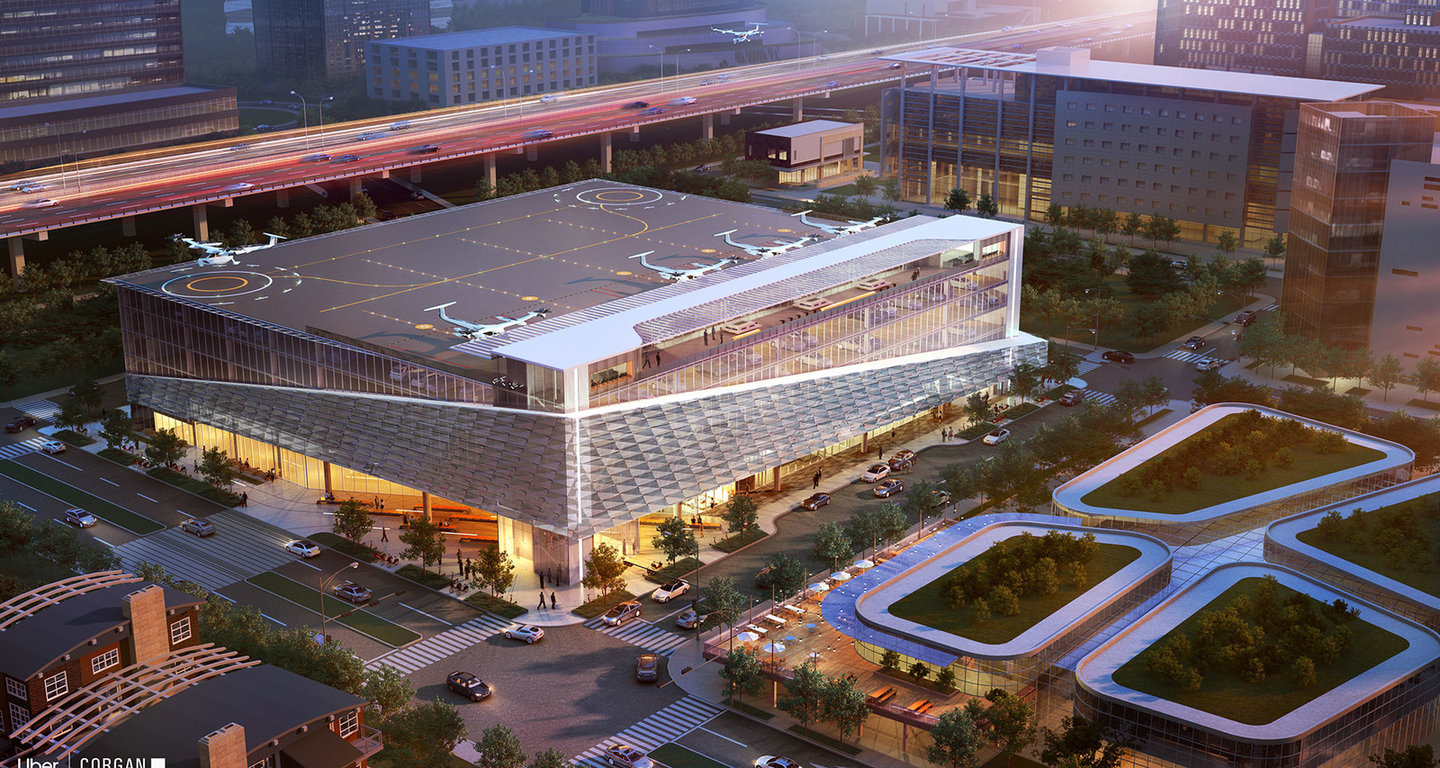
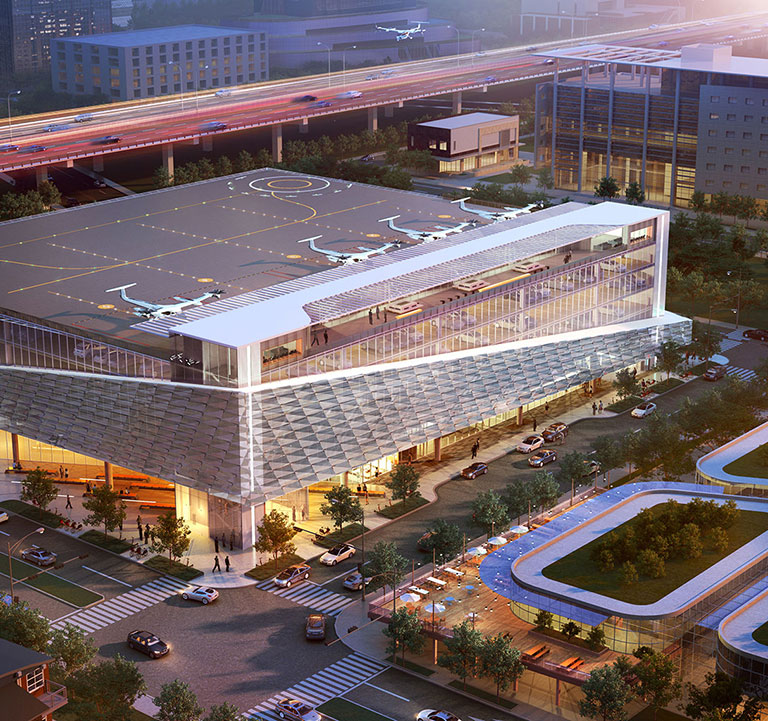
Corgan’s CONNECT | EVOLVED Uber Air Skyport design. Image courtesy of Corgan
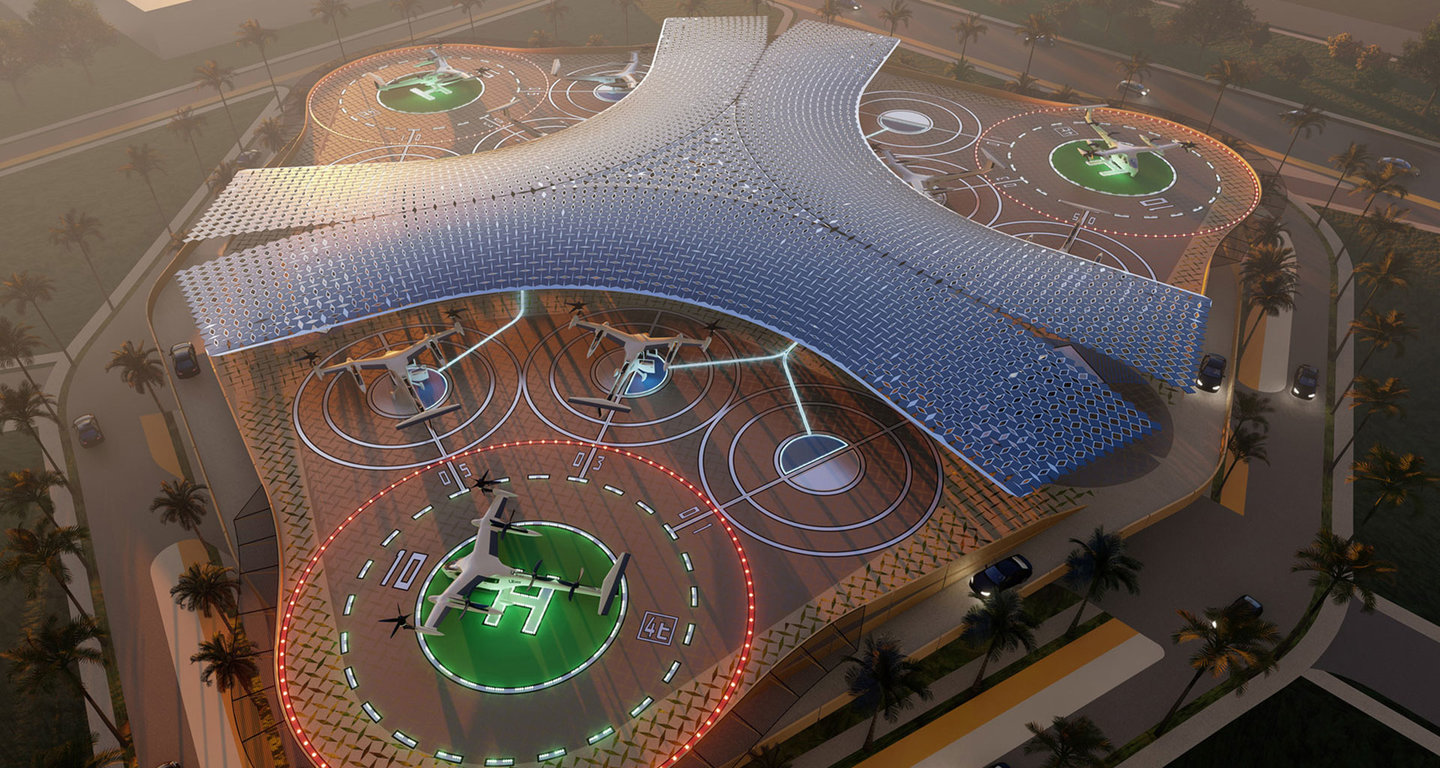
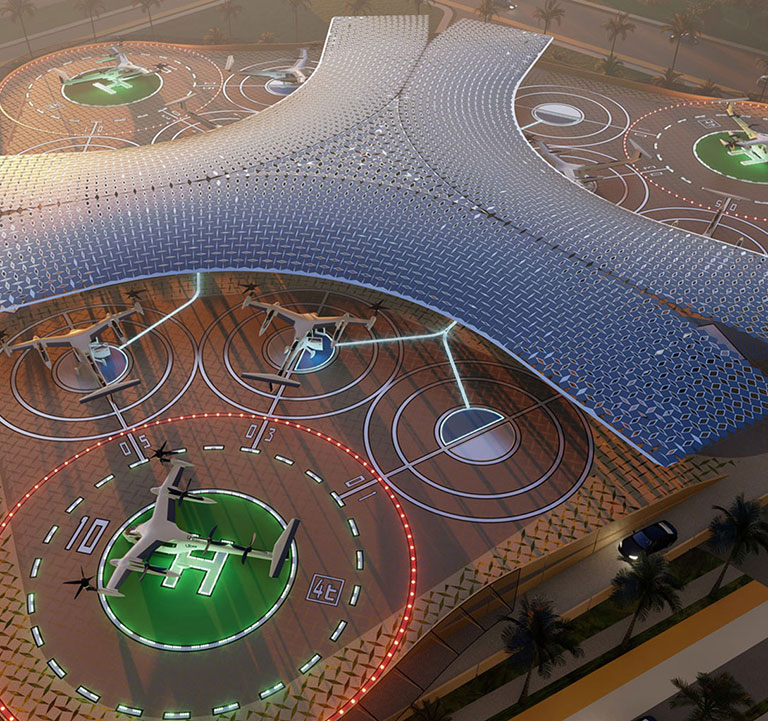
SHoP’s proposed urban air taxi hub design for Uber Air. Image courtesy of SHoP Architects
Urban air mobility
An even greater change to the cityscape could be prompted by the introduction of urban air mobility solutions, or drone taxis. Fitting a network of structures from which drone taxis can take off and safely land in a crowded urban environment will require creative new architectural typologies.
A glimpse of what form this could take was provided earlier this year by Uber, which unveiled 16 new design concepts for Uber Air Skyports. Uber selected eight architecture and engineering firms to showcase their concepts for its network of connected mobility hubs, each with a unique way of approaching the design challenge.
This included CONNECT | EVOLVED, from Dallas-based architecture firm Corgan, whose concept was designed to be constructed over a road to “seamlessly integrate with existing infrastructure”.
The design submitted by SHoP Architects, on the other hand, brings in the traditional notion of creating a space for the community whilst facilitating cutting edge technology, featuring two acres of public park with trees to absorb excess noise produced by air taxis.
This demonstrates that when it comes to an entirely new mode of transport, architects can play a role in shaping how future technologies fit within the urban landscape, giving rise to creative and innovative design.
Stefano Boeri Architetti’s Smart Forest City design for Cancun, Mexico, blends technology with environmental principles.
Image courtesy of The Big Picture
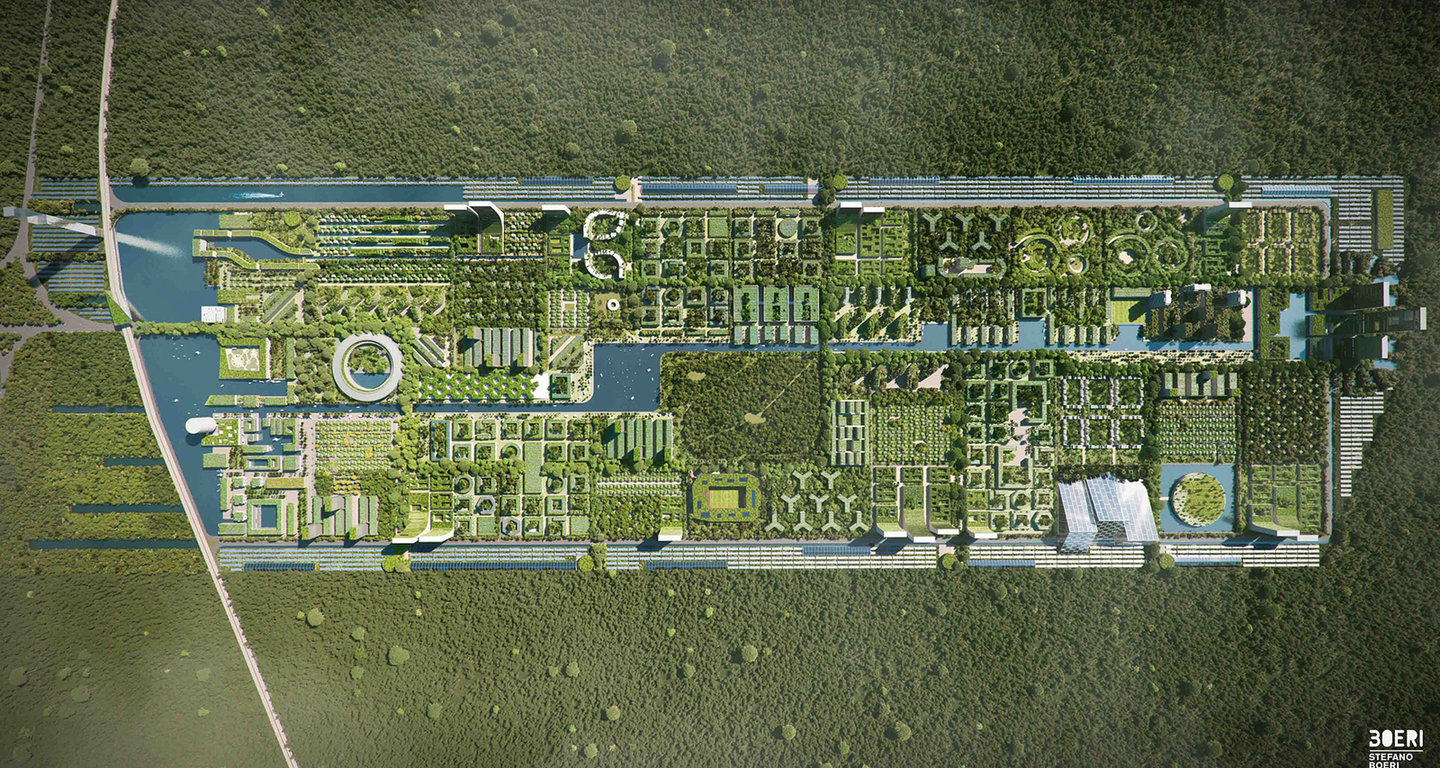
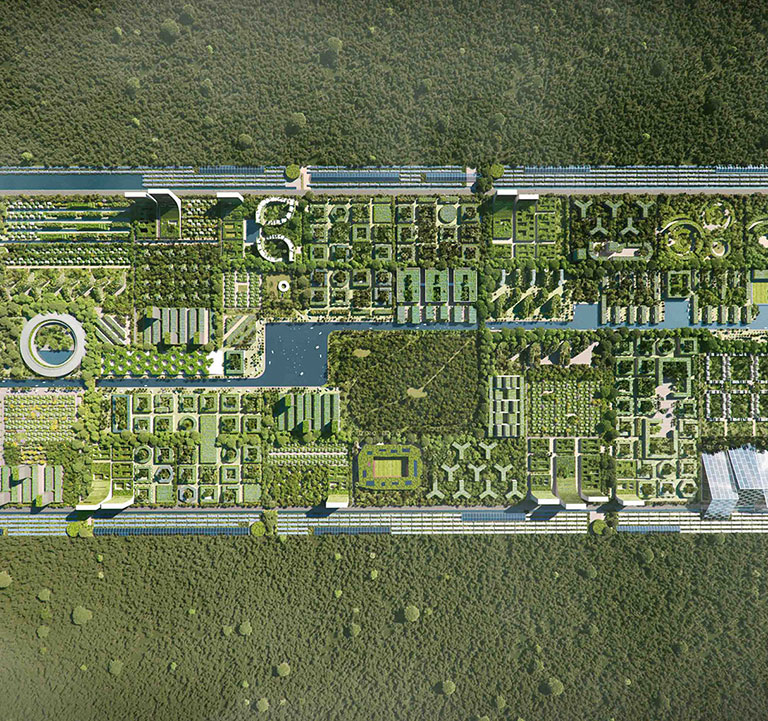
Stefano Boeri Architetti’s Smart Forest City design for Cancun, Mexico, blends technology with environmental principles. Image courtesy of The Big Picture
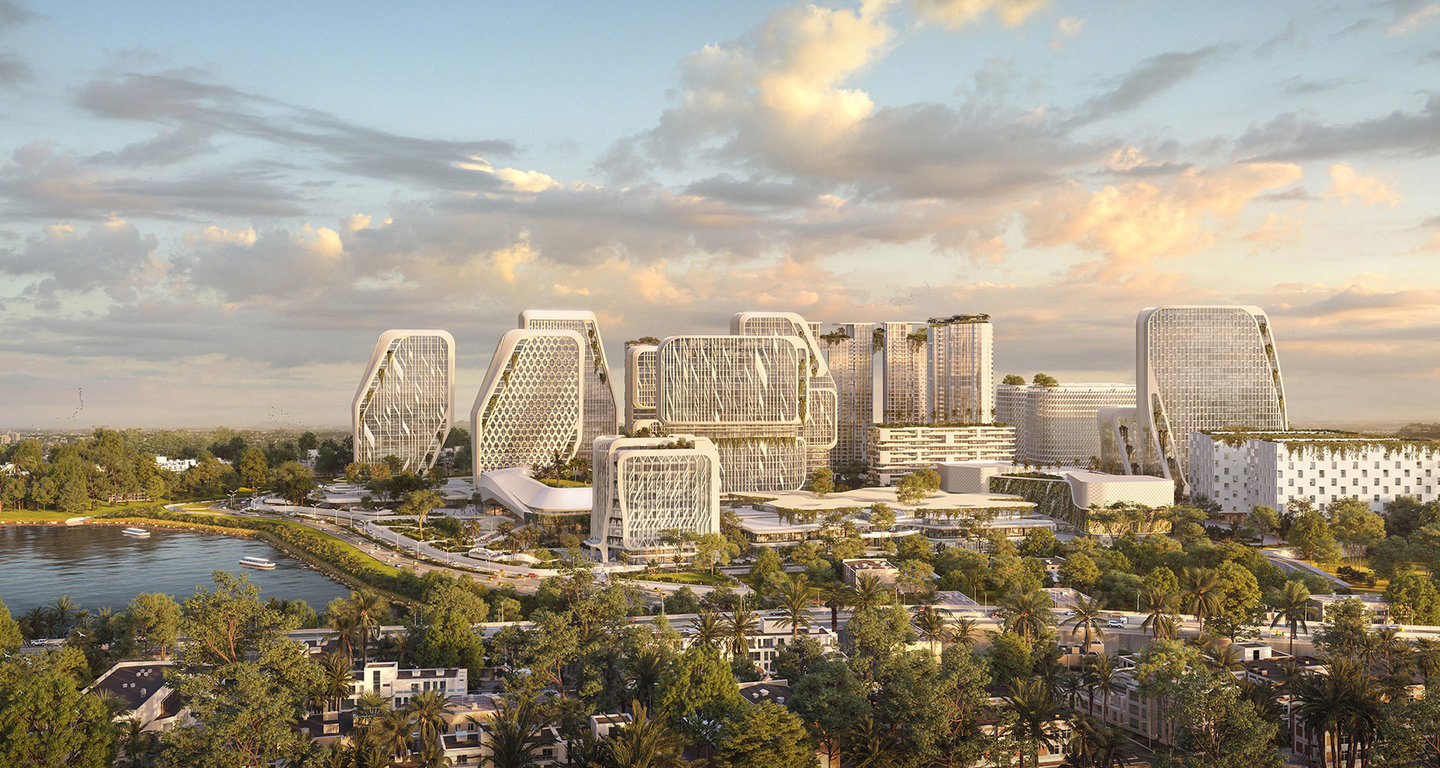
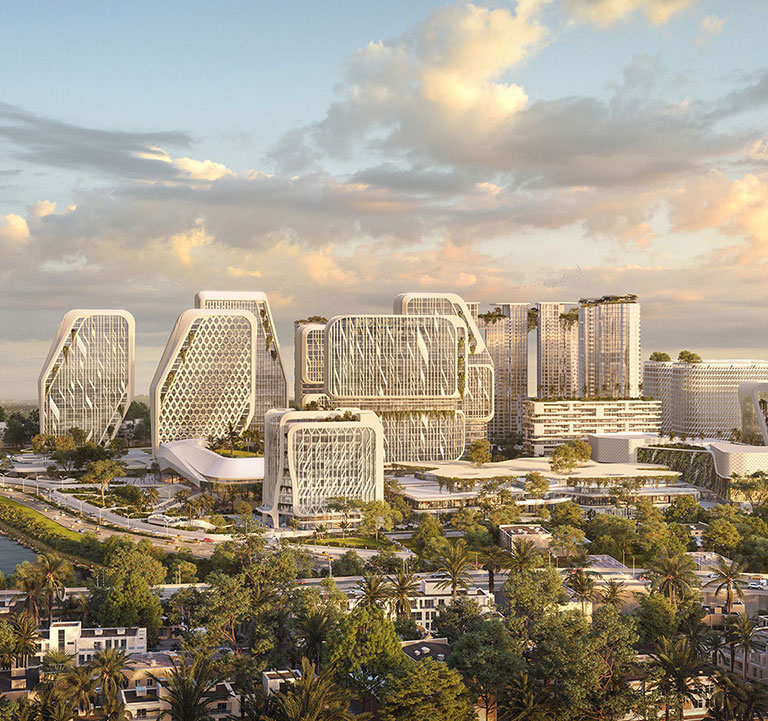
UNStudio’s smart city masterplan for Karle Town Centre, Bangalore, which features sensors embedded into buildings. Image courtesy of UNStudio
Smart cities
With advances in information and communication technologies, as well as artificial intelligence, offering the chance to make cities more efficient, better connected and more environmentally friendly, 'smart' has been a buzzword in city planning for several years now.
As a result, the integration of data-driven smart technology must be considered when planning, designing and building, with greater insights into the movement of people and transport around cities meaning that space can be optimised in new ways.
Projects such as Stefano Boeri Architetti’s Smart Forest City outline how smart technology can be utilised to achieve environmental goals. The designs envisage a city that is “completely food and energy self-sufficient” and is navigated entirely using “electric and semi-automatic mobility”.
Earlier this year, UNStudio and Monopol Colors revealed plans for a smart city in Bangalore in which sensors are embedded into the area’s architecture, with data being used to “inform design” and the information collected used to “tailor the environment to improve residents' wellbeing”.
It is clear that looking to the future, buildings that respond to changing conditions, be it environmental factors or the needs of those who live and work within them, will be a key consideration, driven by a more connected smart city.
MARSHA, AI Space Factory’s design for a Mars habitat, which won the NASA 3D Printed Habitat Challenge.
Image courtesy of AI Space Factory

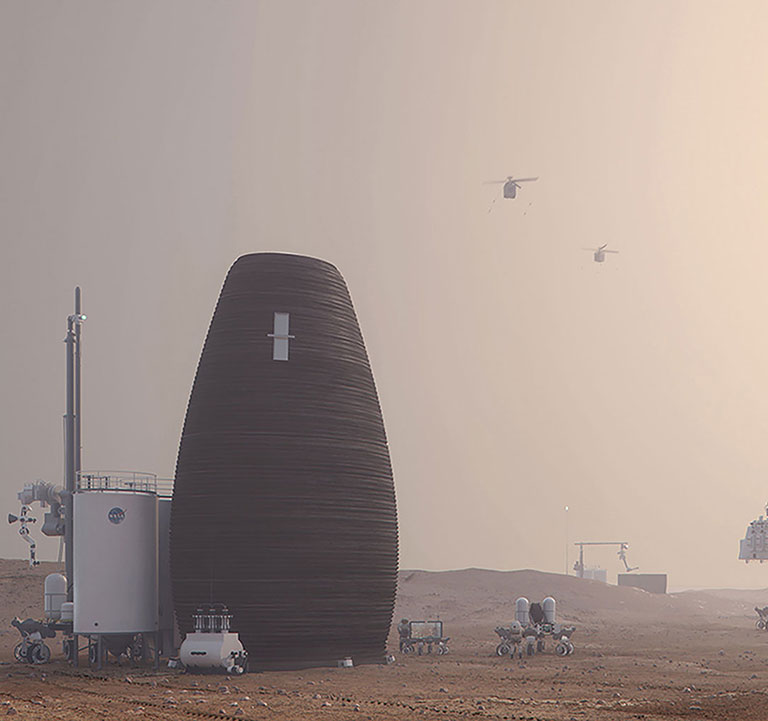
MARSHA, AI Space Factory’s design for a Mars habitat, which won the NASA 3D Printed Habitat Challenge. Image courtesy of AI Space Factory
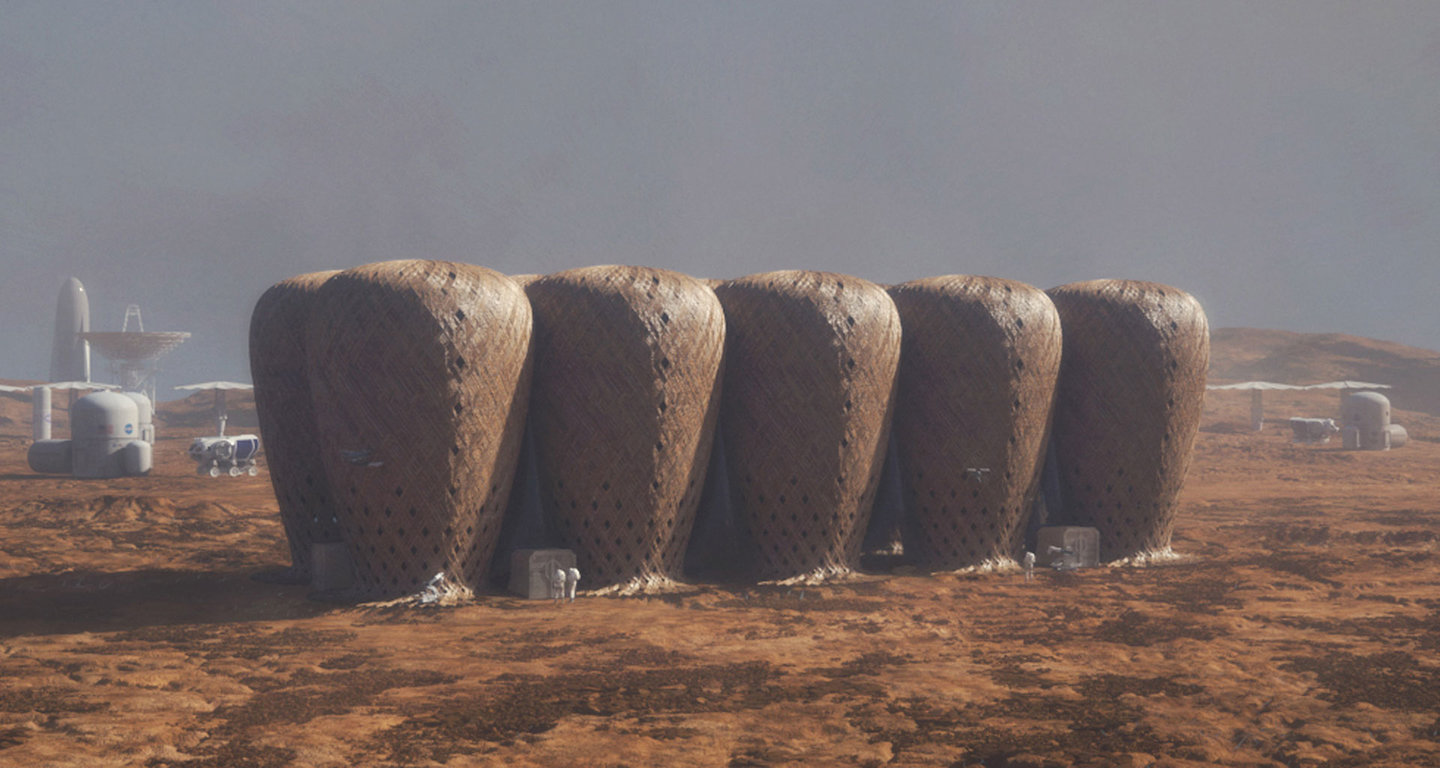

Malaysian designers Warith Zaki and Amir Amzar’s proposed Martian habitats, which use bamboo grown and harvested on the Red Planet. Image courtesy of Warith Zaki and Amir Amzar
Space architecture
Looking beyond the cityscape and to the sky, advances in space travel and the possibility of human colonies on the Moon, Mars and even beyond has seen the emergence of space architecture, with firms envisioning how buildings could be designed to withstand an entirely new environment.
Although science fiction may provide an idea of what this could look like, some architectural firms are now considering how this could become a reality. While firms such as AI Space Factory, which won the NASA 3D Printed Habitat Challenge in 2019, are exploring how methods such as 3D printing can be deployed in space, others are conceptualising how to create a space that is both functionally and visually appealing for inhabitants.
Challenges such as water efficiency, the generation of energy, coping with extreme environments, dealing with waste and sourcing materials must all be considered in this pioneering area of architecture. But what form that could take is currently an unknown.
In 2016, design magazine Eleven ran a competition, called Moontopia, challenging participants to come up with designs for a lunar colony. Entries varied greatly, from an origami-inspired design with a surface that re-shapes in response to solar winds, a doughnut-shaped dome designed to sit within a crater, and a “lunar oasis” designed with inhabitants’ “psychological and physiological” well-being in mind.
More recently, Malaysian firm Zaki and Amzar designed a series of balloon-shaped pods they imagine could one day house inhabitants on Mars, named Seed of Life, constructed from woven bamboo grown directly on the planet.
This demonstrates a future where humans may be designing and building in a harsher environment than today, and where sourcing materials must be considered more closely than ever.